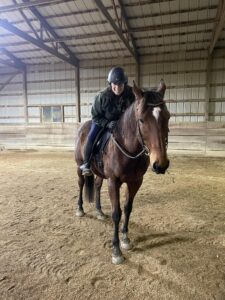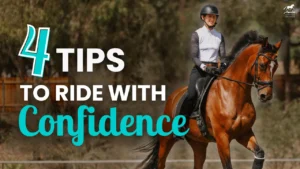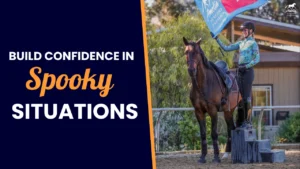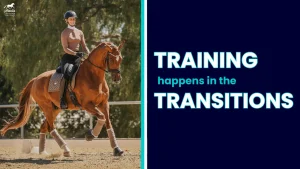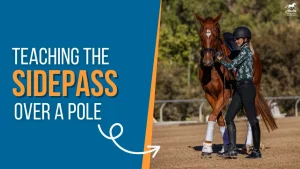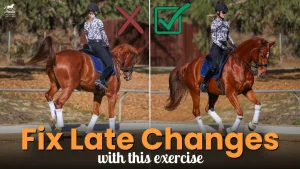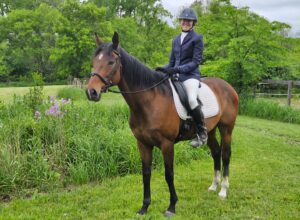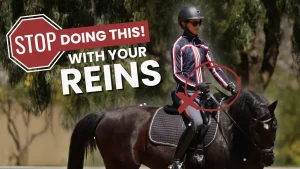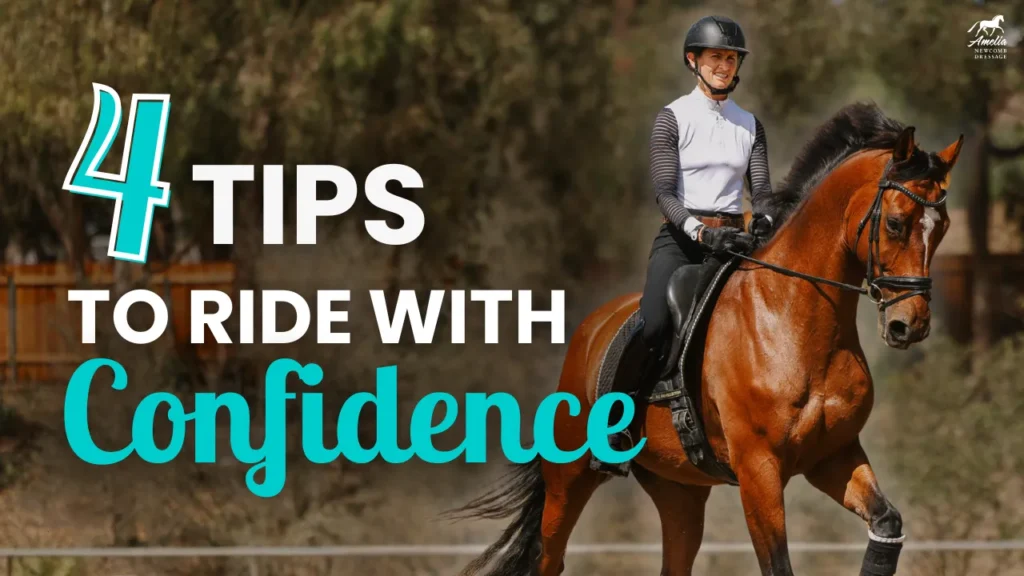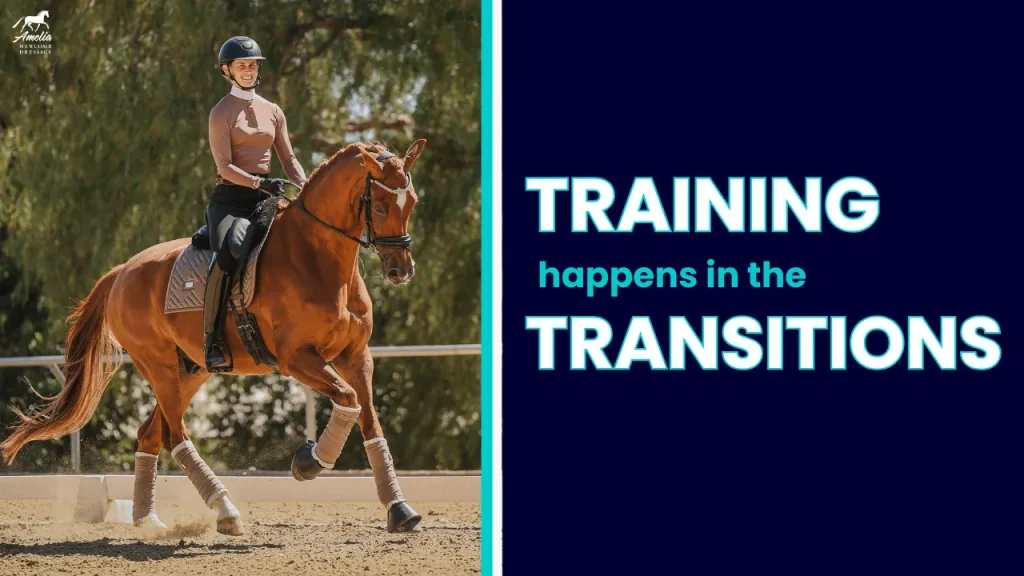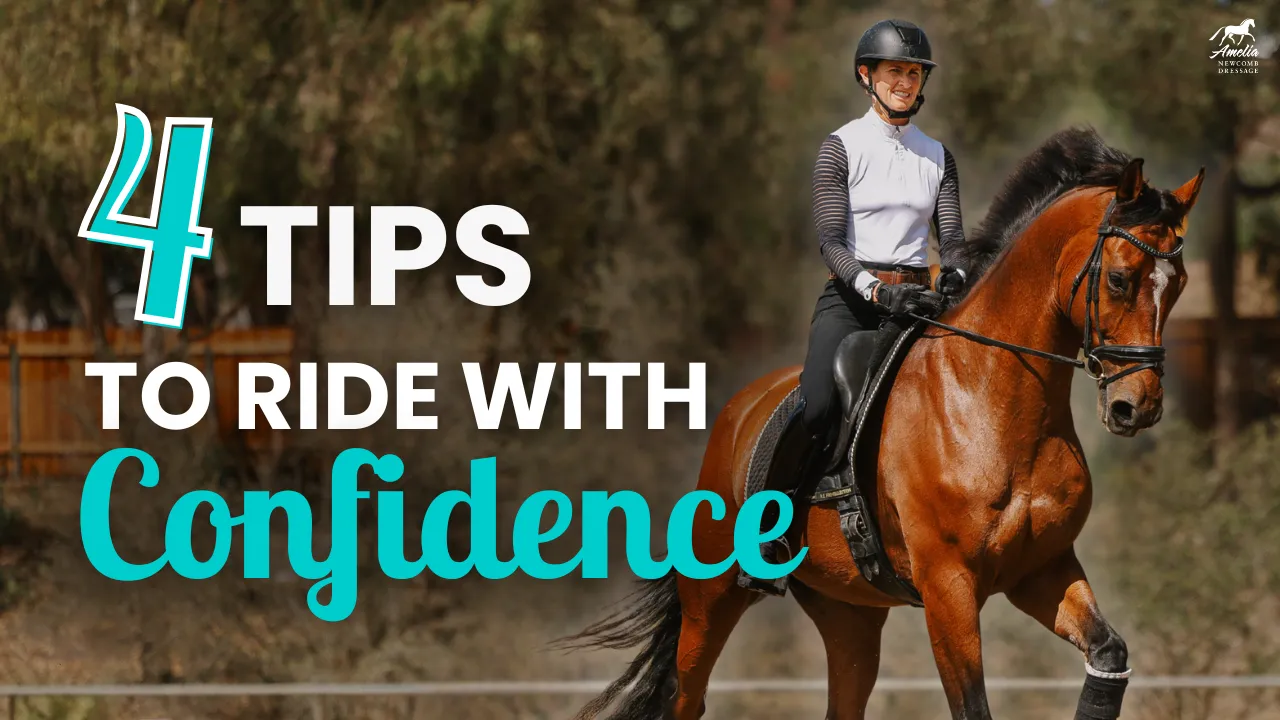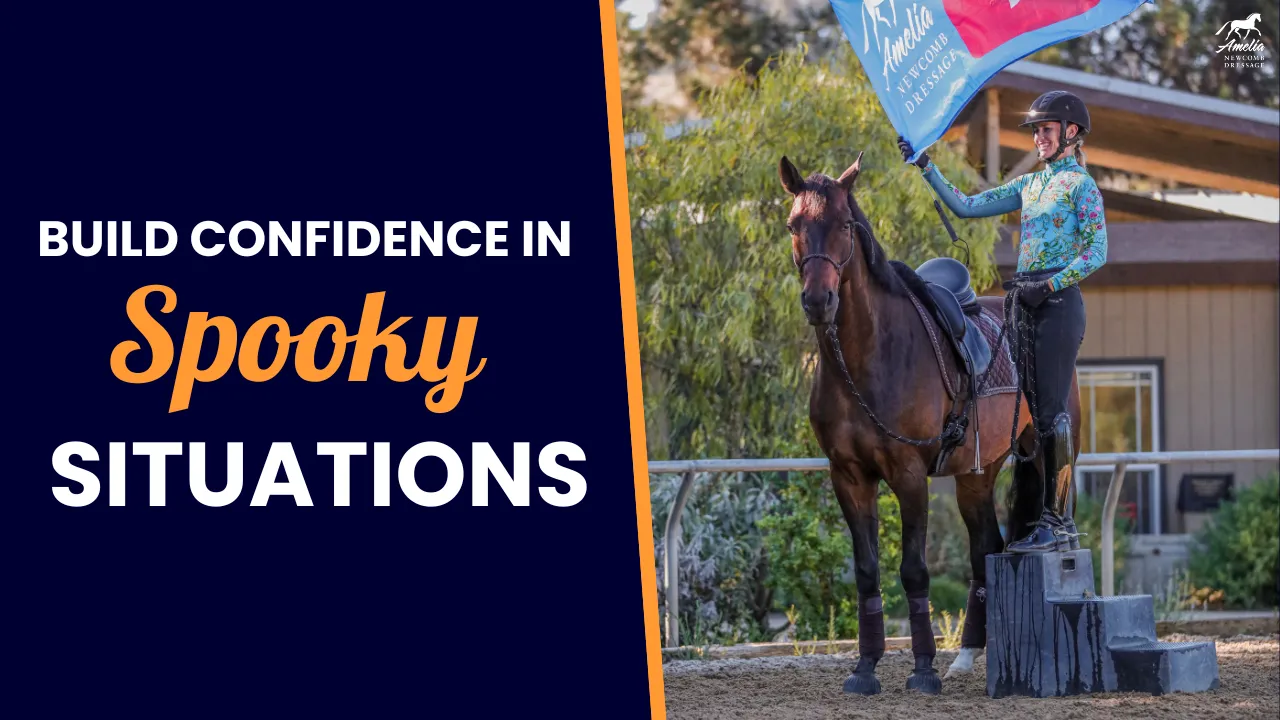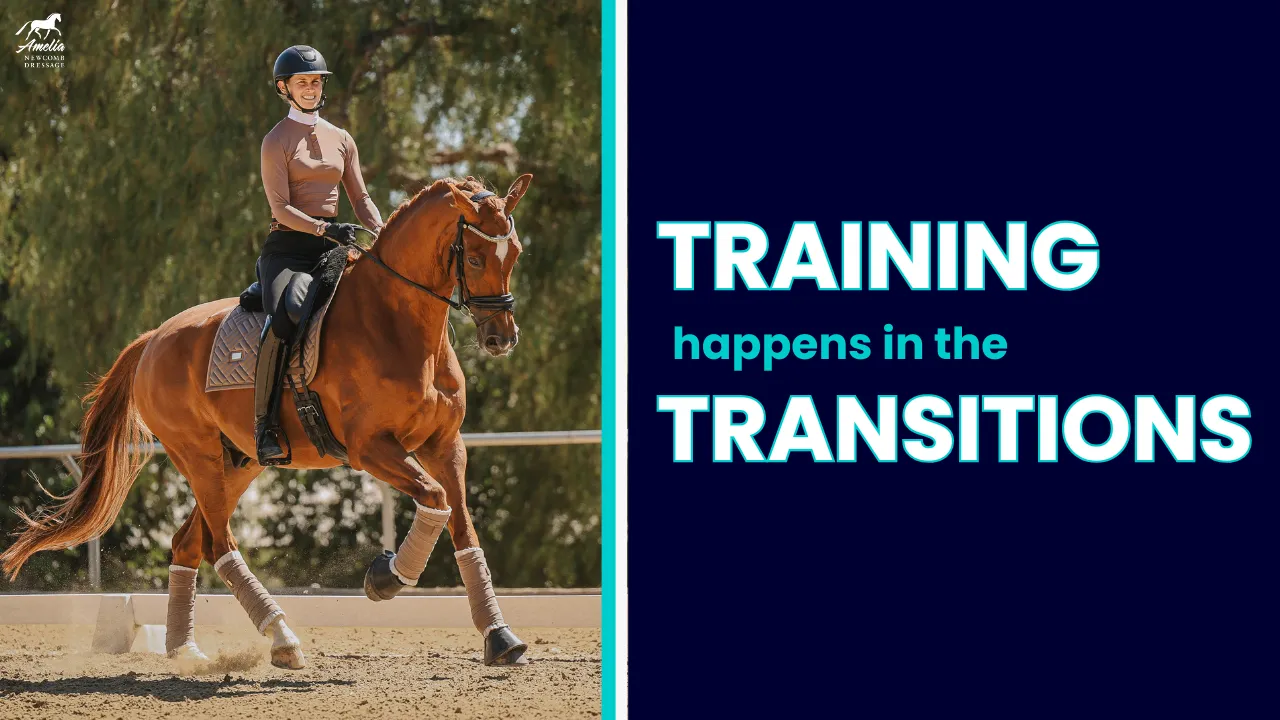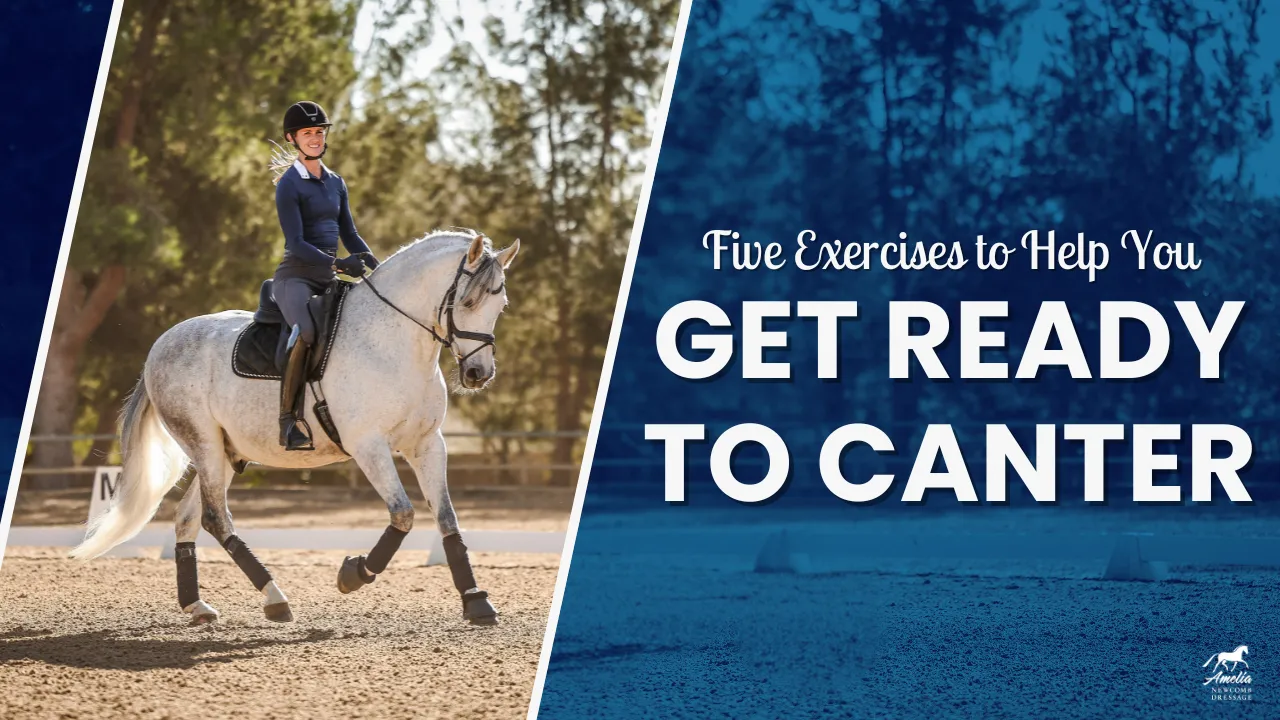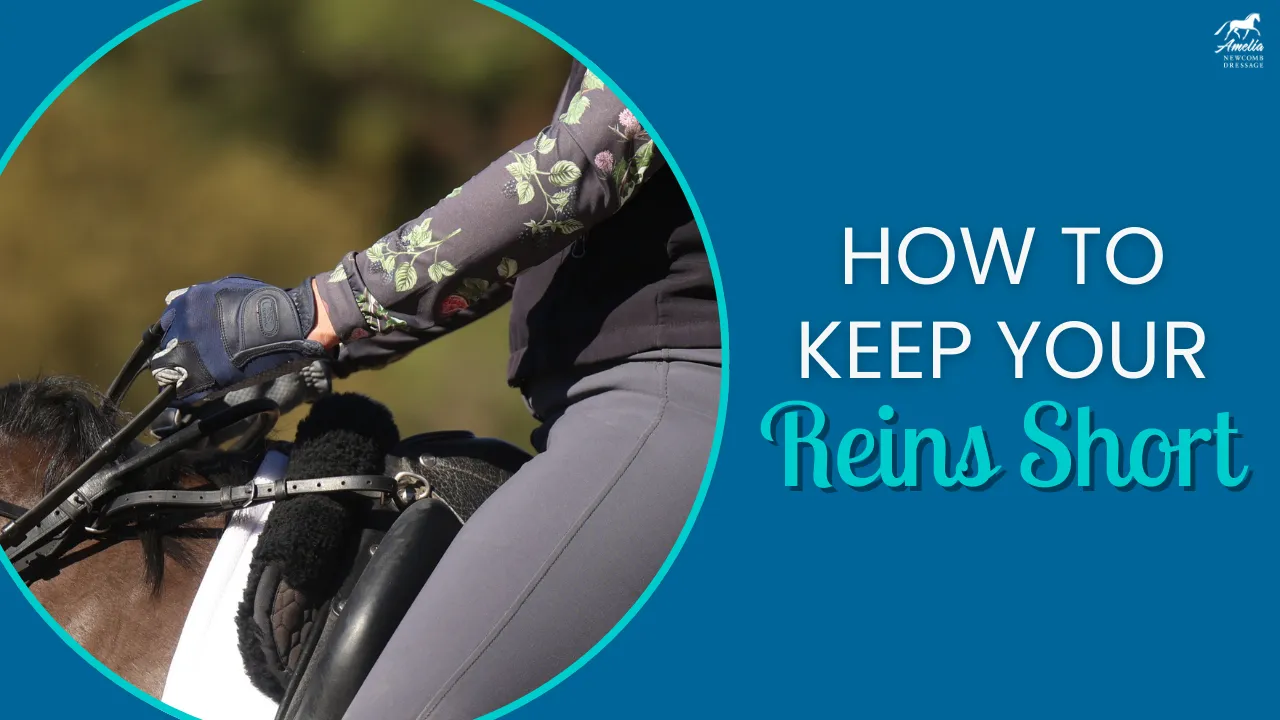If your horse is strong, fussy, or too light in the contact, then this video is for you. In this video, I explain how bit pressure works, what types of bits to use (and avoid), and how to teach your horse to give and respond to the pressure of the bit without force or frustration.
Before we get into the video, I wanted to remind you that my most popular challenge, 30 Days to Round, just opened for enrollment this week! Inside you will learn the exact steps to teach your horse to accept the bit and use their topline correctly—without force or frustration. Check it out here.
Ok, now on to the video!
It’s Not About the Bit
Let’s start with the truth: no bit will magically fix a training issue. We’ve all been tempted to switch tack in hopes that the next bit will solve everything, but if your horse doesn’t understand how to give to pressure, changing bits won’t help.
Instead, the answer lies in teaching your horse that pressure on the bit means “soften and release.”
That’s the foundation of all training—pressure and release.
(Stay tuned – I have a good exercise at the end to help you with this)
What Kind of Bit Should You Use?
While changing bits isn’t the solution, having the right starting point matters. I always begin my horses in a snaffle bit, and here’s a quick breakdown of your options:
- Loose Ring, Double-Jointed Snaffle: My go-to. It allows for independent rein aids and encourages softness without leverage.
- Eggbutt Snaffle (Single or Double Jointed): Provides more stability, ideal for horses who are fussy or need help turning. But be aware of the “nutcracker effect” that can cause pressure on the roof of the mouth.
- Happy Mouth Bit: Great for sensitive horses or those that don’t want to take contact. Its soft plastic and flexibility encourage chewing and relaxation.
Each horse is unique, so experiment a little to see what your horse prefers—mouth shape, tongue and lip size, sensitivity, and training history all play a role.
🚫 Avoid starting young or green horses in leverage bits like curbs or Pelhams. These limit lateral flexion and add unnecessary pressure.
Teach the Response First—Before You Ride
One of my favorite exercises is teaching the horse from the ground how to give to the bit. Here’s how:
- Stand beside your horse near the shoulder.
- Take a light feel on one rein.
- Wait for your horse to soften and turn their head slightly toward the pressure.
- The moment they give, release.
This teaches the essential message: if you feel pressure, soften, and the pressure goes away.
It’s simple but incredibly effective. Many horses learn to lean into the bit because they’ve never been taught this foundational response.
Whether your horse is strong, curled, fussy, or just not accepting the bit, roundness starts with softness—not force. Focus on teaching your horse how to respond to pressure with small, clear steps. Remember, your choice of bit should help to support—not substitute—good training.
Hope this helps you and your horse!
Happy Riding!
Amelia
P.S. Struggling to get your horse round, soft, and connected? The 30 Days to Round Challenge is now open for enrollment! If your horse is stiff, heavy, or resistant in the contact, I’ll guide you step-by-step to build softness, roundness, and true connection. Learn more and join here.
